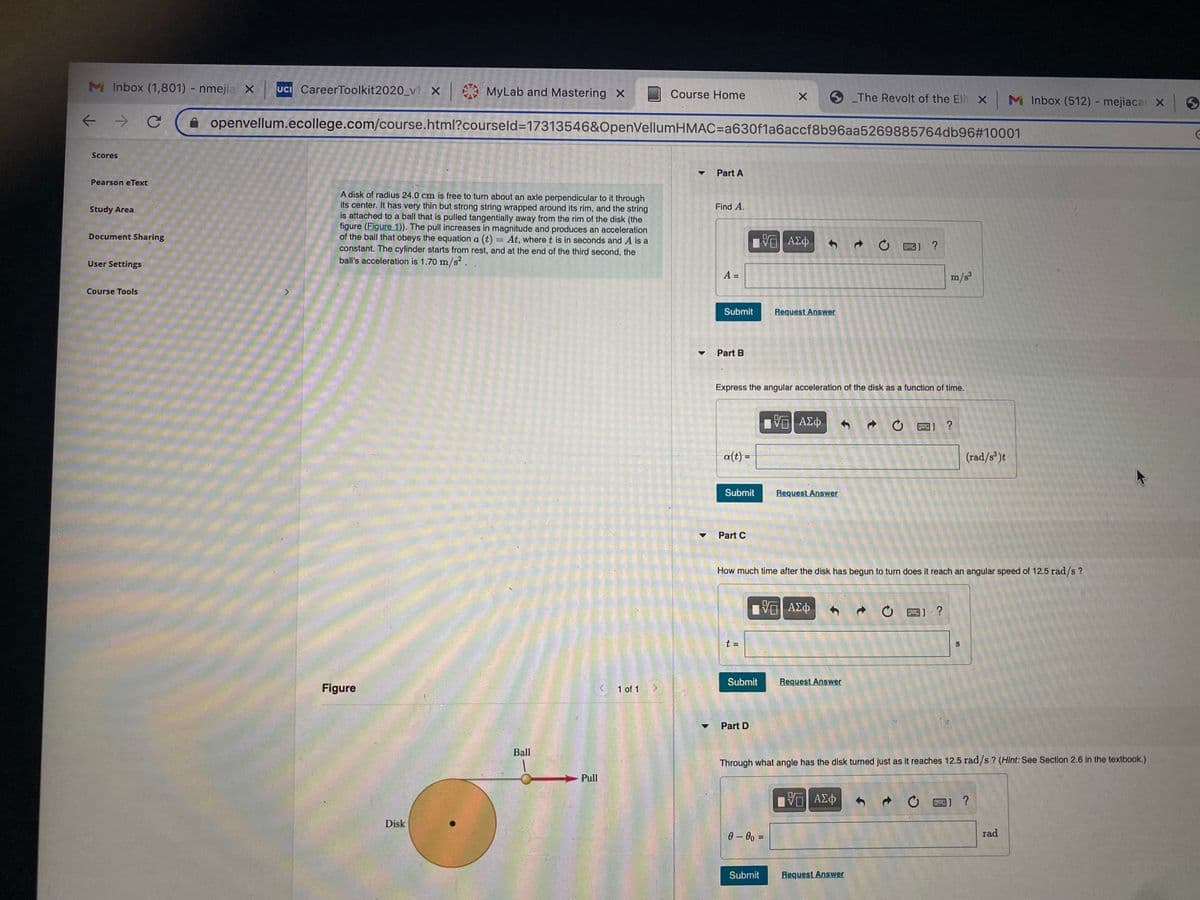Part A A disk of radius 24.0 cm is free to tum about an axle perpendicular to it through Its center. It has very thin but strong string wrapped around its rim, and the string is attached to a ball that is pulled tangentially away from the rim of the disk (the figure (Eigure 1)). The pul increases in magnitude and produces an acceleration of the ball that obeys the equation a (t) At. where t is in seconds and A is a constant. The cylinder starts from rest, and at the end of the third second, the ball's acceleration is 1.70 m/s. Find A. * O D) ? m/s Submit Request Anawer Part B Express the angular acceleration of the disk as a function of time. VAE a(t) = (rad/s)t Submit Request Anawer Part C How much time after the disk has begun to turn does it reach an angular speed of 125 rad/s ? * O D) ? Submit Request Answer Figure < 1 of 1 Part D Ball Through what angle has the disk turned just as it reaches 12.5 rad/s ? (Hint: See Section 2.6 in the textbook) Pull AEd Disk rad Submit Bequest Answer
Rigid Body
A rigid body is an object which does not change its shape or undergo any significant deformation due to an external force or movement. Mathematically speaking, the distance between any two points inside the body doesn't change in any situation.
Rigid Body Dynamics
Rigid bodies are defined as inelastic shapes with negligible deformation, giving them an unchanging center of mass. It is also generally assumed that the mass of a rigid body is uniformly distributed. This property of rigid bodies comes in handy when we deal with concepts like momentum, angular momentum, force and torque. The study of these properties – viz., force, torque, momentum, and angular momentum – of a rigid body, is collectively known as rigid body dynamics (RBD).

Trending now
This is a popular solution!
Step by step
Solved in 3 steps with 3 images








